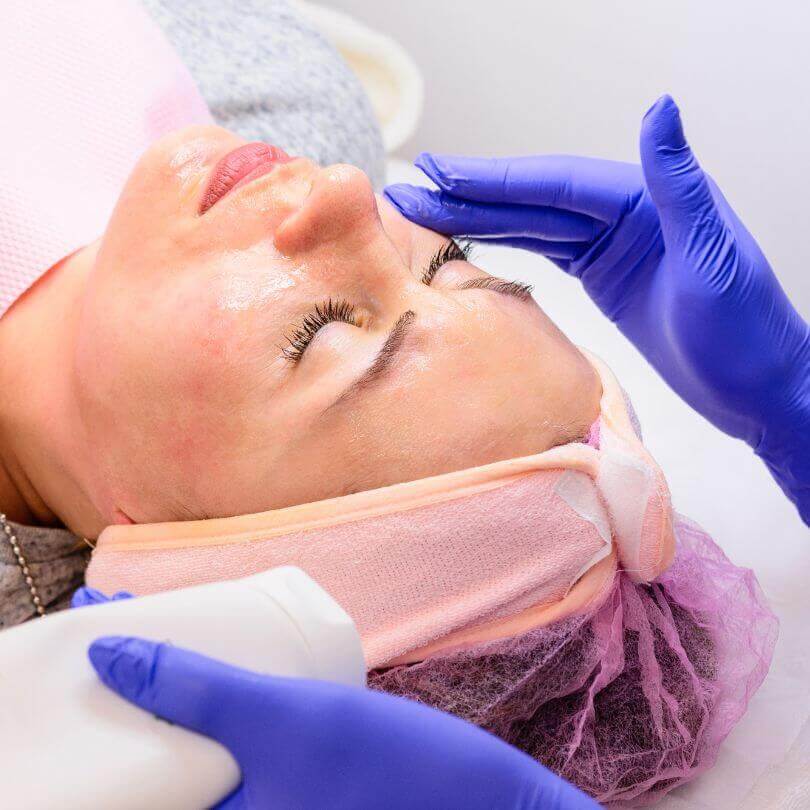Microneedling has become a popular cosmetic treatment for improving skin texture, tone, and reducing signs of aging. But what happens after the microneedling procedure? Understanding the microneedling healing stages is crucial for optimal recovery and achieving the best results.
Microneedling and Its Impact on Skin
Microneedling involves creating tiny controlled punctures in the skin using a roller or pen with fine needles. This triggers the body’s natural healing response, stimulating collagen production and promoting skin cell turnover. While minimally invasive, microneedling does create controlled micro-injuries, and understanding the healing process is essential.
Microneedling Healing Stages
The microneedling healing stages are a remarkable journey that your skin embarks on after undergoing this rejuvenating procedure. Understanding each phase is crucial to optimizing the treatment’s benefits and ensuring a successful outcome.
The microneedling healing process can be broken down into several stages, each with its own set of expectations:
- Immediately After Treatment: You may experience redness, swelling, and a sensation similar to sunburn. This is normal and typically subsides within 24-48 hours.
- Days 1-3: Redness and sensitivity might persist, and some patients experience mild pinpoint bleeding. Cleansing and moisturizing with gentle products is crucial during this time.
- Days 4-7: Peeling and flaking of the skin are common as new cells replace damaged ones. Avoid picking or scratching the treated area to prevent scarring.
- Weeks 2-4: The redness fades completely, and initial improvements in skin texture and tone may become noticeable. Collagen production continues to increase during this time.
- Weeks 4-8 and Beyond: Continued improvement in skin texture, firmness, and reduction in wrinkles are expected. The full effects of microneedling can take up to 3 months to become fully evident.

Benefits and Highlights of Microneedling
Microneedling offers a range of benefits for various skin concerns:
- Reduces signs of aging like fine lines and wrinkles
- Improves skin texture and elasticity
- Minimizes the appearance of scars, including acne scars
- Shrinks enlarged pores
- Promotes a more even skin tone
Tips and Best Practices for Microneedling Recovery
To fully harness the power of microneedling, it’s essential to follow expert-recommended tips and best practices. From pre-treatment preparation to post-procedure care, these guidelines will ensure a smooth and effective healing process, ultimately enhancing your skin’s radiance and resilience.
Following these tips can optimize your microneedling healing journey:
- Listen to your skin: Avoid harsh skincare products, scrubbing, and excessive sun exposure during the healing process.
- Moisturize diligently: Use a gentle, fragrance-free moisturizer to keep your skin hydrated and promote healing.
- Sunscreen is essential: Apply a broad-spectrum SPF 30 or higher daily to protect your newly regenerated skin cells from sun damage.
- Makeup can wait: Avoid applying makeup for at least 24 hours after treatment to minimize the risk of infection.
- Embrace the healing process: Peeling and flaking are signs of healthy skin renewal. Avoid picking or scratching at the treated area.
- Consult a professional: Discuss your specific needs and expectations with a qualified dermatologist or aesthetician who can create a personalized treatment plan.
Professional Opinions and Recommendations
Dr. Sarah Miller, a board-certified dermatologist, emphasizes the importance of proper aftercare: “Microneedling offers impressive results for various skin concerns. However, following a diligent aftercare routine is crucial for optimal healing and minimizing the risk of complications.”
Licensed aesthetician Jane Doe advises choosing a qualified provider: “Seek treatment from a licensed professional with experience in microneedling. They can customize the treatment to your specific needs and ensure a safe and effective procedure.”
The Role of Collagen Production in Skin Rejuvenation
Collagen, the body’s natural structural protein, plays a pivotal role in maintaining skin’s firmness, elasticity, and youthful appearance. During the microneedling healing stages, the controlled micro-injuries trigger an increased production of collagen, resulting in a plumper, smoother, and more radiant complexion.

Addressing Specific Skin Concerns with Microneedling
Microneedling is a versatile treatment that can effectively address a wide range of skin concerns, from fine lines and wrinkles to acne scars, hyperpigmentation, and uneven texture. Renowned dermatologists and skincare professionals share their insights on tailoring microneedling protocols to meet individual needs and achieve optimal results.
Combining Microneedling with Other Treatments for Enhanced Outcomes
While microneedling is highly effective on its own, many experts recommend combining it with complementary treatments, such as topical serums or platelet-rich plasma (PRP) therapy, to amplify its rejuvenating effects. This section explores the benefits of integrating microneedling into a comprehensive skincare regimen.

